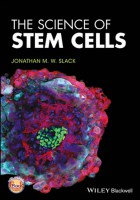بیولوژی کمپبل 2020 زبان اصلی
Campbell Biology 11th Edition
About the Author
Lisa A. Urry
Lisa Urry (Chapter 1 and Units 1, 2, and 3) is Professor of Biology and Chair of the Biology Department at Mills College in Oakland, California, and a Visiting Scholar at the University of California, Berkeley. After graduating from Tufts University with a double major in biology and French, Lisa completed her Ph.D. in molecular and developmental biology at Massachusetts Institute of Technology (MIT) in the MIT/Woods Hole Oceanographic Institution Joint Program. She has published a number of research papers, most of them focused on gene expression during embryonic and larval development in sea urchins. Lisa has taught a variety of courses, from introductory biology to developmental biology and senior seminar. As a part of her mission to increase understanding of evolution, Lisa also teaches a nonmajors course called Evolution for Future Presidents and is on the Teacher Advisory Board for the Understanding Evolution website developed by the University of California Museum of Paleontology. Lisa is also deeply committed to promoting opportunities for women and underrepresented minorities in science.
Michael L. Cain
Michael Cain (Units 4, 5, and 8) is an ecologist and evolutionary biologist who is now writing full-time. Michael earned a joint degree in biology and math at Bowdoin College, an M.Sc. from Brown University, and a Ph.D. in ecology and evolutionary biology from Cornell University. As a faculty member at NEW! Mexico State University and Rose-Hulman Institute of Technology, he taught a wide range of courses, including introductory biology, ecology, evolution, botany, and conservation biology. Michael is the author of dozens of scientific papers on topics that include foraging behavior in insects and plants, long-distance seed dispersal, and speciation in crickets. Michael is also the lead author of an ecology textbook.
Steven A. Wasserman
Steve Wasserman (Unit 7) is Professor of Biology at the University of California, San Diego (UCSD). He earned his A.B. in biology from Harvard University and his Ph.D. in biological sciences from MIT. Through his research on regulatory pathway mechanisms in the fruit fly Drosophila, Steve has contributed to the fields of developmental biology, reproduction, and immunity. As a faculty member at the University of Texas Southwestern Medical Center and UCSD, he has taught genetics, development, and physiology to undergraduate, graduate, and medical students. He currently focuses on teaching introductory biology. He has also served as the research mentor for more than a dozen doctoral students and more than 50 aspiring scientists at the undergraduate and high school levels. Steve has been the recipient of distinguished scholar awards from both the Markey Charitable Trust and the David and Lucille Packard Foundation. In 2007, he received UCSD’s Distinguished Teaching Award for undergraduate teaching.
Peter V. Minorsky
Peter Minorsky (Unit 6) is Professor of Biology at Mercy College in New York, where he teaches introductory biology, evolution, ecology, and botany. He received his A.B. in biology from Vassar College and his Ph.D. in plant physiology from Cornell University. He is also the science writer for the journal Plant Physiology. After a postdoctoral fellowship at the University of Wisconsin at Madison, Peter taught at Kenyon College, Union College, Western Connecticut State University, and Vassar College. His research interests concern how plants sense environmental change. Peter received the 2008 Award for Teaching Excellence at Mercy College.
Jane B. Reece
The head of the author team for recent editions of CAMPBELL BIOLOGY, Jane Reece was Neil Campbell’s longtime collaborator. Earlier, Jane taught biology at Middlesex County College and Queensborough Community College. She holds an A.B. in biology from Harvard University, an M.S. in microbiology from Rutgers University, and a Ph.D. in bacteriology from the University of California, Berkeley. Jane’s research as a doctoral student and postdoctoral fellow focused on genetic recombination in bacteria. Besides her work on the Campbell textbooks for biology majors, she has been an author of Campbell Biology: Concepts & Connections, Campbell Essential Biology, and The World of the Cell.
Neil A. Campbell
Neil Campbell (1946–2004) combined the investigative nature of a research scientist with the soul of an experienced and caring teacher. He earned his M.A. in zoology from the University of California, Los Angeles, and his Ph.D. in plant biology from the University of California, Riverside, where he received the Distinguished Alumnus Award in 2001. Neil published numerous research articles on desert and coastal plants and how the sensitive plant (Mimosa) and other legumes move their leaves. His 30 years of teaching in diverse environments included introductory biology courses at Cornell University, Pomona College, and San Bernardino Valley College, where he received the college’s first Outstanding Professor Award in 1986. He was a visiting scholar in the Department of Botany and Plant Sciences at the University of California, Riverside. Neil was the lead author of Campbell Biology: Concepts & Connections, Campbell Essential Biology, and CAMPBELL BIOLOGY.
بیولوژی سولومون ویرایش یازدهم (زبان اصلی)
Solomon, Martin, Martin and Berg's BIOLOGY--often described as the best majors' text for learning Biology--is also a complete teaching program. The integrated, inquiry-based learning system guides students through every chapter with key concepts at the beginning of each chapter and learning objectives for each section. End-of-section Checkpoint questions encourage students to review key points before moving on. A chapter summary further reinforces learning objectives, followed by an opportunity for students to test their understanding. The eleventh edition offers expanded integration of the text's five guiding themes of Biology--the evolution of life, the transmission of biological information, the flow of energy through living systems, interactions among biological systems and the inter-relationship of structure and function.
فیزیولوژی پزشکی گایتون و هال ویرایش 14 زبان اصلی
The 14th edition of Guyton and Hall Textbook of Medical Physiology continues this bestselling title's long tradition as the world’s foremost medical physiology textbook. Unlike other textbooks on this topic, this clear and comprehensive guide has a consistent, single-author voice and focuses on the content most relevant to clinical and pre-clinical students. The detailed but lucid text is complemented by didactic illustrations that summarize key concepts in physiology and pathophysiology.
- Larger font size emphasizes core information around how the body must maintain homeostasis in order to remain healthy, while supporting information and examples are detailed in smaller font and highlighted in pale blue.
- Summary figures and tables help quickly convey key processes covered in the text.
- Bold full-color drawings and diagrams.
- Short, easy-to-read, masterfully edited chapters and a user-friendly full-color design.
- Brand-new quick-reference chart of normal lab values on the inside back cover.
- Increased number of figures, clinical correlations, and cellular and molecular mechanisms important for clinical medicine.
- Student Consult eBook version included with purchase. This enhanced eBook experience includes the complete text, interactive figures, references, plus 50 self-assessment questions and more than a dozen animations.
اندودنتیکس اینگل ویرایش هفتم
Ingle’s Endodontics, 7th edition, is the most recent revision of the text that has been known as the “Bible of Endodontics” for half a century. The new edition, originally published in two volumes, continues the tradition of including the expertise of international leaders in the field. Eighty-six authors contributed cutting-edge knowledge and updates on topics that have formed the core of this book for years. New chapters reflect the ways in which the field of endodontics has evolved over the 50 years since the pioneer John I. Ingle authored Endodontics.
Ingle’s Endodontics will continue to be the standard against which all other endodontic texts will be measured. The 40 chapters are arranged in two volumes under three sections: The Science of Endodontics; The Practice of Endodontics: Diagnosis, Clinical Decision Making, Management, Prognosis; and Interdisciplinary Endodontics.
With contributions from the world’s experts in all phases of the specialty, Ingle’s Endodontics, 7th edition promises to be an indispensable dentistry textbook, an essential part of every endodontist’s library.
ژنتیک مولکولی واتسون 2014 زبان اصلی
About the Author
James D. Watson is Chancellor Emeritus at Cold Spring Harbor Laboratory, where he was previously its Director from 1968 to 1993, President from 1994 to 2003, and Chancellor from 2003 to 2007. He spent his undergraduate years at the University of Chicago and received his Ph.D. in 1950 from Indiana University. Between 1950 and 1953, he did postdoctoral research in Copenhagen and Cambridge, England. While at Cambridge, he began the collaboration that resulted in the elucidation of the double-helical structure of DNA in 1953. (For this discovery, Watson, Francis Crick, and Maurice Wilkins were awarded the Nobel Prize in 1962.) Later in 1953, he went to the California Institute of Technology. He moved to Harvard in 1955, where he taught and did research on RNA synthesis and protein synthesis until 1976. He was the first Director of the National Center for Genome Research of the National Institutes of Health from 1989 to 1992. Dr. Watson was sole author of the first, second, and third editions of Molecular Biology of the Gene, and a co-author of the fourth, fifth and sixth editions. These were published in 1965, 1970, 1976, 1987, 2003, and 2007, respectively. He is also a co-author of two other textbooks: Molecular Biology of the Cell and Recombinant DNA, as well as author of the celebrated 1968 memoir, The Double Helix, which in 2012 was listed by the Library Of Congress as one of the 88 books that shaped America.________________________________________
Tania A. Baker is the Head of the Department and Whitehead Professor of Biology at the Massachusetts Institute of Technology, and an Investigator of the Howard Hughes Medical Institute. She received a B.S. in biochemistry from the University of Wisconsin, Madison, and a Ph.D. in biochemistry from Stanford University in 1988. Her graduate research was carried out in the laboratory of Professor Arthur Kornberg and focused on mechanisms of initiation of DNA replication. She did postdoctoral research in the laboratory of Dr. Kiyoshi Mizuuchi at the National Institutes of Health, studying the mechanism and regulation of DNA transposition. Her current research explores mechanisms and regulation of genetic recombination, enzyme-catalyzed protein unfolding, and ATP-dependent protein degradation. Professor Baker received the 2001 Eli Lilly Research Award from the American Society of Microbiology and the 2000 MIT School of Science Teaching Prize for Undergraduate Education and is a fellow of the American Academy of Arts and Sciences since 2004 and was elected to the National Academy of Sciences in 2007. She is co-author (with Arthur Kornberg) of the book DNA Replication, Second Edition.
________________________________________
Stephen P. Bell is a Professor of Biology at the Massachusetts Institute of Technology and an Investigator of the Howard Hughes Medical Institute. He received B.A. degrees from the Department of Biochemistry, Molecular Biology, and Cell Biology and the Integrated Sciences Program at Northwestern University and a Ph.D. in biochemistry at the University of California, Berkeley in 1991. His graduate research was carried out in the laboratory of Dr. Robert Tjian and focused on eukaryotic transcription. He did postdoctoral research in the laboratory of Dr. Bruce Stillman at Cold Spring Harbor Laboratory, working on the initiation of eukaryotic DNA replication. His current research focuses on the mechanisms controlling the duplication of eukaryotic chromosomes. Professor Bell received the 2001 ASBMB–Schering Plough Scientific Achievement Award, the 1998 Everett Moore Baker Memorial Award for Excellence in Undergraduate Teaching at MIT and the 2006 MIT School of Science Teaching Award.
________________________________________
Alexander A.F. Gann is the Lita Annenberg Hazen Dean and Professor in the Watson School of Biological Sciences at Cold Spring Harbor Laboratory. He is also a Senior Editor at Cold Spring Harbor Laboratory Press. He received his B.Sc in microbiology from University College London and a Ph.D. in molecular biology from The University of Edinburgh in 1989. His graduate research was carried out in the laboratory of Noreen Murray and focused on DNA recognition by restriction enzymes. He did postdoctoral research in the laboratory of Mark Ptashne at Harvard, working on transcriptional regulation, and that of Jeremy Brockes at the Ludwig Institute of Cancer Research at University College London, where he worked on newt limb regeneration. He was a Lecturer at Lancaster University, U.K., from 1996 to 1999, before moving to Cold Spring Harbor Laboratory. He is co-author (with Mark Ptashne) of the book Genes & Signals (2002), and co-editor (with Jan Witkowski) of The Annotated & Illustrated Double Helix.
________________________________________
Michael Levine is a Professor of Genetics, Genomics and Development at the University of California, Berkeley, and is also Co-Director of the Center for Integrative Genomics. He received his B.A. from the Department of Genetics at University of California, Berkeley, and his Ph.D. with Alan Garen in the Department of Molecular Biophysics and Biochemistry from Yale University in 1981. As a postdoctoral fellow with Walter Gehring and Gerry Rubin from 1982-1984, he studied the molecular genetics of Drosophila development. Professor Levine's research group currently studies the gene networks responsible for the gastrulation of the Drosophila and Ciona (sea squirt) embryos. He holds the F. Williams Chair in Genetics and Development at University of California, Berkeley. He was awarded the Monsanto Prize in Molecular Biology from the National Academy of Sciences in 1996, and was elected to the American Academy of Arts and Sciences in 1996 and the National Academy of Sciences in 1998.
________________________________________
Richard M. Losick is the Maria Moors Cabot Professor of Biology, a Harvard College Professor, and a Howard Hughes Medical Institute Professor in the Faculty of Arts & Sciences at Harvard University. He received his A.B. in chemistry at Princeton University and his Ph.D. in biochemistry at the Massachusetts Institute of Technology. Upon completion of his graduate work, Professor Losick was named a Junior Fellow of the Harvard Society of Fellows when he began his studies on RNA polymerase and the regulation of gene transcription in bacteria. Professor Losick is a past Chairman of the Departments of Cellular and Developmental Biology and Molecular and Cellular Biology at Harvard University. He received the Camille and Henry Dreyfuss Teacher-Scholar Award, is a member of the National Academy of Sciences, a Fellow of the American Academy of Arts and Sciences, a Fellow of the American Association for the Advancement of Science, a Fellow of the American Academy of Microbiology, a member of the American Philosophical Society, and a former Visiting Scholar of the Phi Beta Kappa Society. Professor Losick is the 2007 winner of the Selman A. Waksman Award of the National Academy of Sciences, a 2009 winner of the Canada Gairdner Award, and a 2012 winner of the Louisa Gross Horwitz Prize for Biology or Biochemistry of Columbia University.
Annual Update in Intensive Care and Emergency Medicine 2021
About the Author
Prof. Jean-Louis Vincent is Professor of intensive care at the University of Brussels, and intensivist in the Department of Intensive Care at Erasme University Hospital in Brussels. He is Past-President of the World Federation of Societies of Intensive and Critical Care Medicine (WFSICCM), the Belgian Society of Intensive Care Medicine (SIZ), the European Society of Intensive Care Medicine (ESICM), the European Shock Society (ESS), and the International Sepsis Forum (ISF). He is a member of the Royal Academy of Medicine of Belgium.Prof. Vincent has signed more than 1000 articles, 400 book chapters and review articles, and 1000 original abstracts, and has edited more than 100 books. He is co-editor of the Textbook of Critical Care (Elsevier Saunders) and the “Encyclopedia of Intensive Care Medicine” (Springer). He is editor-in-chief of "Critical Care", "Current Opinion in Critical Care", and "ICU Management & Practice" and member of the editorial boards of about 30 journals.
Prof Vincent has received several awards, including the Distinguished Investigator and Lifetime Achievement Awards of the Society of Critical Care Medicine, the College Medalist Award of the American College of Chest Physicians, the Society Medal (lifetime award) of the European Society of Intensive Care Medicine, the Presidential Award of the European Respiratory Society and the prestigious Belgian scientific award of the FRS-FNRS (Prix Scientifique Joseph Maisin-Sciences Biomédicales Cliniques). In recognition of these achievements, he was awarded the title of Baron by the King of Belgium.



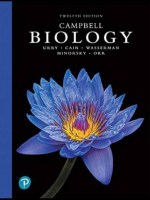

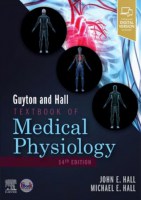

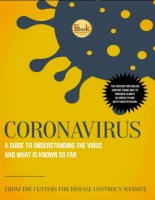
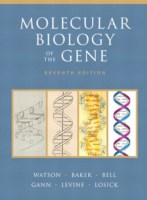

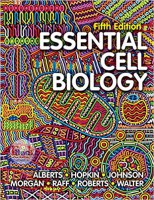

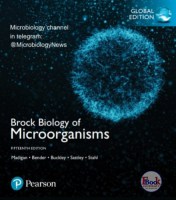
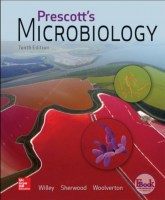
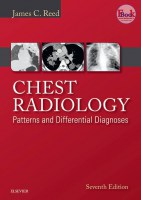
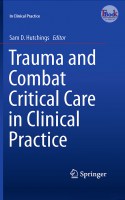

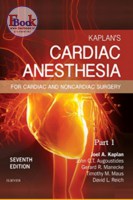
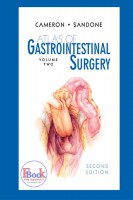
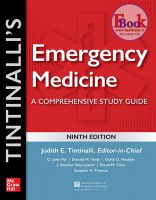
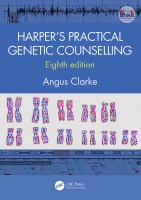
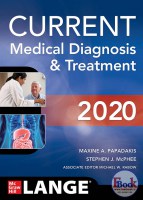
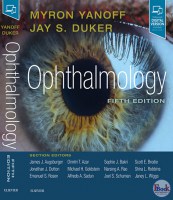
_200x200.jpg)
